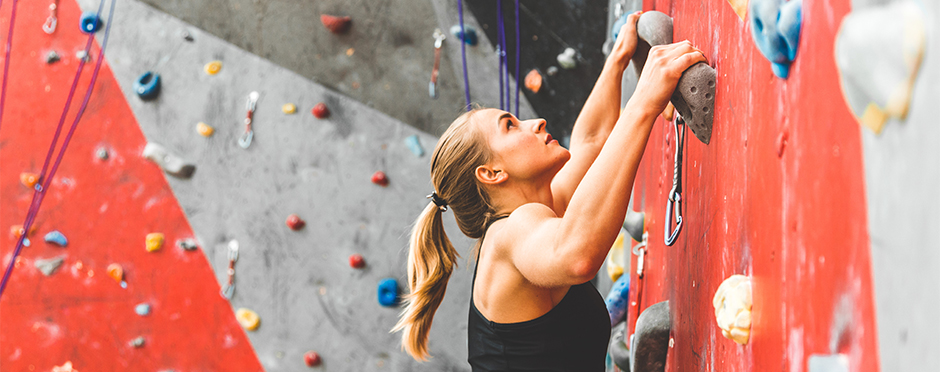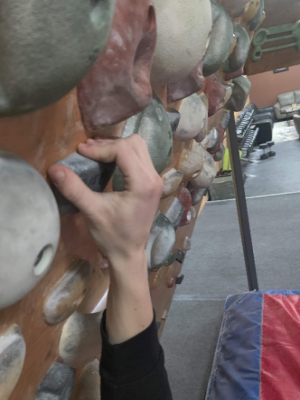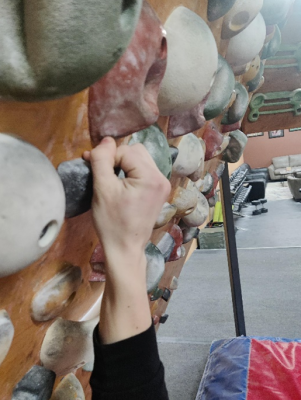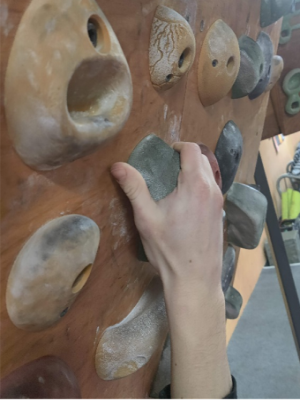
Hand Injuries Common To Rock Climbers
Leave a CommentRock climbers face many types of injuries to their bodies, be it from falling rock, or one’s worst fear, a trauma from a fall event. What many don’t realize is the risk to the entire body, especially the hands. Climbers can experience overuse when training, particularly when training indoors, repeating the same routes multiple times. This can lead to shoulder and elbow tendonitis. However, most climbers don’t fear these types of injuries, but rather finger injuries. Even though rock climbing is a full body exercise, fingers make the most contact with rocks or grips, thus taking more stress than other body parts.
The most common hand injury incurred from rock climbing is an annular pulley injury to a finger, often the ring or middle finger4,3. Most people only become aware of this type of injury once they fall victim to it. Finger pulleys are thick, fibrous bands of connective tissue that surround the tendons that flex the fingers and keep them flush to the bone, creating a greater mechanical advantage. Without these bands the tendons pull away from the bone, decreasing hand and finger strength. There are five of these bands to each finger spanning from the base of the large knuckle to the end of the finger. The second of these pulleys, named the A2 pulley is most often injured, and is located at the base of the finger near the junction with the palm4,1. A “crimp,” hold is responsible for the excessive force which can cause an injury ranging from a strain or a complete rupture of the pulley. Overuse of, “crimping,” which is when the end joint of the finger is hyperextended and the middle joint if flexed, causes the tendons of the finger to push outwards stretching the pulley. This posture along with a slip of the foot or pulling all of one’s body weight with only one hand, puts an unexpected force on the A2 pulley. A climber may hear an audible popping and feel immediate pain if the pulley is injured. This is often followed by swelling and bruising at the base of the finger1,3,4,5.
Gripping Techniques
Crimp grip exerts excessive force on the hand which can result in injury ranging from strain to rupture.
Closed grip which is also not the preferred grip as this can also result in injury. When possible, opt for an open grip.
Open-hand grip is the preferred gripping technique to most effectively reduce the risk of injury.
So, What Should Be Done If You Suspect You Injured A Finger Pulley?
First, stop climbing immediately and perform first aid measures such as applying ice 10 minutes at a time 3-5 times a day. You can perform an active range of motion exercises, by simply opening the fingers and closing into a loose fist, and continue to use the hand for light activities, so long as this does not increase pain. If there’s no improvement after a couple days, it is advisable to see a physician. If symptoms are decreasing, heat may be introduced after a week or two, along with massage to increase blood flow to the area to facilitate healing. Full recovery for a simple strain will take about 6 weeks and protective taping should be performed around the base of the finger for 3 months. It is advisable to take a gradual approach back to climbing, first starting with soft putty and isometric holds, (maybe just holding on the edge of a table or counter) then progressing to easy routes with large hand hold1,3. Should symptoms persist, surgical intervention may be indicated to repair the pulley system. Even after a repair, taping, a pulley ring orthosis, or wearing a silicone ring may need to be continued as preventative measures to prevent recurrence2,6.
Preventative Measures
To prevent injuries, it’s advisable to take a few simple steps to decrease chances of injury to the hands and the entire body. First, warm up by raising your body temperature by contracting the muscles you will be using such as squats, torso twists, arm raises and gentle gripping. Second, increase your body awareness and pay attention to your hand position and hold before engaging in a move. Third, try to use the larger muscles of the lower body, instead of relying on the hands and upper body. Lastly, vary hand holds to avoid overuse of one particular structure3,4.
We’re Here To Help!
If you have further questions or concerns about your injury or are looking for more tips to prevent an injury from occurring, contact your nearest Athletico today for schedule a free assessment. Free Assessments are available in-clinic and virtually through our Telehealth platform. Happy climbing!
*Per federal guidelines, beneficiaries of plans such as Medicare, Medicaid, Tricare, VHA and other federally funded plans are not eligible for free assessments.
The Athletico blog is an educational resource written by Athletico employees. Athletico bloggers are licensed professionals who abide by the code of ethics outlined by their respective professional associations. The content published in blog posts represents the opinion of the individual author based on their expertise and experience. The content provided in this blog is for informational purposes only, does not constitute medical advice and should not be relied on for making personal health decisions.
References:
1 Person. “Finger Injuries and Climbing.” BoulderCentre for Orthopedics & Spine, 3 Jan. 2018, https://www.bouldercentre.com/news/finger-injuries-and-climbing.
2 Cannon, Nancy M. Diagnosis and Treatment Manual for Physicians & Therapists: Upper Extremity Treatment Guidelines, 5th ed., vol. 2, Hand Rehabilitation Center of Indiana, Indianapolis, IN, 2020, p. 404.
3 “Rock Climbing Injuries.” Physiopedia, https://www.physio-pedia.com/Rock_Climbing_Injuries.
4 Gidding, Jeff. “A Complete Guide to Finger Injuries and How to Recover.” Climbing, 1 Apr. 2022, https://www.climbing.com/skills/climbing-finger-injury-diagnosis-treatments-recovery/.
5 “Rock Climbing Injuries.” The Hand Society, https://www.assh.org/handcare/condition/rock-climbing-injuries.
6 Batul, et al. “A Potentially Inexpensive Diagnostic Method for A2 Pulley Ruptures.” Cureus, U.S. National Library of Medicine, 2019, https://pubmed.ncbi.nlm.nih.gov/31700762/.



